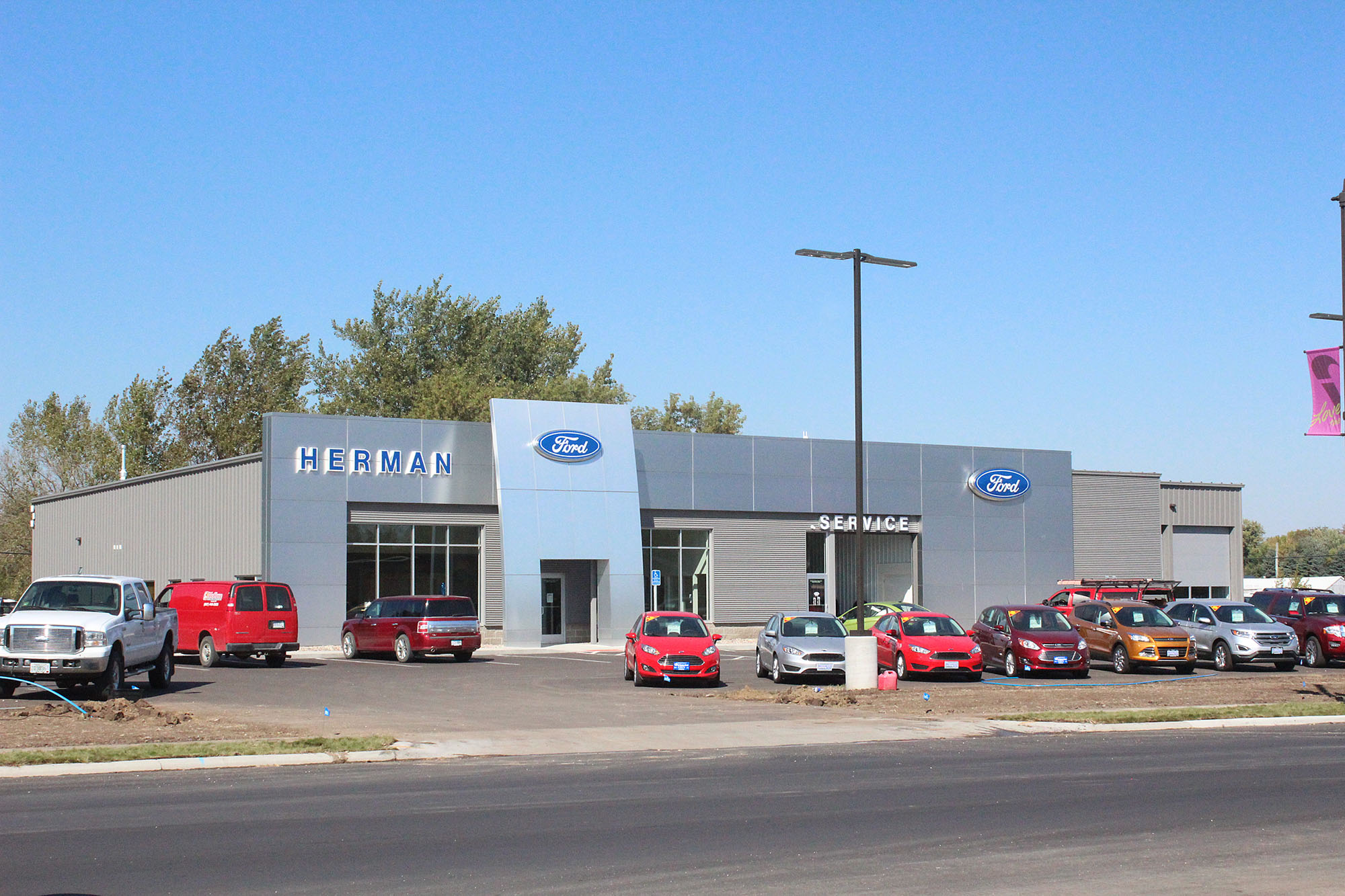
Herman Motor Company moved to its new dealership location on South Highway 75 in June, and a grand opening celebration is planned for Friday, Sept. 25.
A ribbon-cutting is set for 4 p.m., and an open house from 4 to 7 p.m. will include food, inflatables, raffle prizes, Dairy Barn ice cream and a cruise-in.
Auto enthusiasts are invited to bring their classic Ford, Lincoln or Mercury vehicles to the dealership.
Owner Joel Herman said it feels good to be in the new location, but it took a month before he stopped driving east on Main Street to get to work.
“That’s where I was so used to going,” said Herman, a third generation auto dealership owner. For more than 80 years, the Herman family has sold cars in downtown Luverne.
That all changed when Herman Motors had an opportunity to expand and recently relocate on South Highway 75.
“It feels wonderful,” Herman said about the new look and extra space. “Sales are up 20 percent since we moved out here.”
Part of that he attributes to the Highway 75 visibility, and part of it is due to new space for added inventory. “We can offer more selection,” he said.
In the downtown dealership location, Herman Motor had space for 60 vehicles. The new lot has capacity for 110.
He said he and his family enjoyed the nostalgia of the downtown Ford location, but he said the business was overdue for change.
“Something had to be done with that old building, and we were out of space,” Herman said. “We feel fortunate that the Historical Society wanted to buy that old building. I figured I’d have it until the roof fell in.”
The Rock County Historical Society purchased the former Herman Motor building on East Main Street in November 2013 and since then has been fundraising to transform it into The History Center.
Herman said many of the new dealership building considerations were decided by Ford corporation, which provided cost share incentives if Herman followed the plan.
“Everything had to be approved by them — the square footage of the showroom, office space, tile on the floor and carpeting,” Herman said, adding that this took many of the difficult decisions out of the process.
Herman said he appreciated the city of Luverne’s help with the process, and also the lending expertise of Minnwest Bank, which connected him to resources such as the Small Business Administration.
“It looks a lot better out here than before,” he said.
“I hope it’s an asset to the community. It was important to me that we relocate within the city limits, and it’s been great to have people wander in off the street to check us out. We’ve been extremely busy.”
‘Best example of what Tax Increment Financing is for’
Part of the city help came in the form of tax increment financing (TIF).
The $2 million project involved 430 linear feet of property previously owned by Eastern Farmers Union.
The properties included the Cenex station, the car wash and the triangle-shaped building that once was a coffee shop. The three buildings were considered to be substandard, according to the city building and zoning office, making the property appropriate for tax increment financing.
TIF is a common economic development tool for cities to use as an incentive to promote growth while at the same time cleaning up blighted areas of a community.
City Finance Director Barb Berghorst said Luverne hasn’t used TIF in a number of years, but she said the application is good for the Herman project.
“To me, it’s the best example of what TIF is for,” Berghorst said following the Sept. 24, 2013, council meeting when TIF was approved.
“They (the co-op) are abandoning their use of the property, and if they hadn’t found a buyer, abandoned buildings generally decrease in value.”
When a tax increment district is established, the property owner pays more in property taxes as they are calculated on the higher market value after the improvements are made.
The original amount of taxes continues to be paid to the county, city and school district.
The difference between the two amounts (the old taxes and what would be the new taxes based on the property’s improved value) is used to pay off the debt accrued to pay for the improvements.
In the Herman Motor Co. case, taxes previously generated by the three parcels totaled $5,286 per year.
The estimated market value of the new Herman property is $1.5 million. Estimated taxes generated on the improved parcels are $32,000 per year.
Under the TIF agreement, Herman will pay the $32,000 in taxes per year. The difference in the two tax amounts — $26,714 — will be paid toward the debt on the project.
According to the agreement, it will take 20 years at this amount to pay off the $400,000 cost of site acquisition, demolition and site preparation for the Herman relocation and expansion.
The total cost of the project is slightly more than $2 million, but the TIF incentives apply only to the portion that involves improving the blighted properties.


